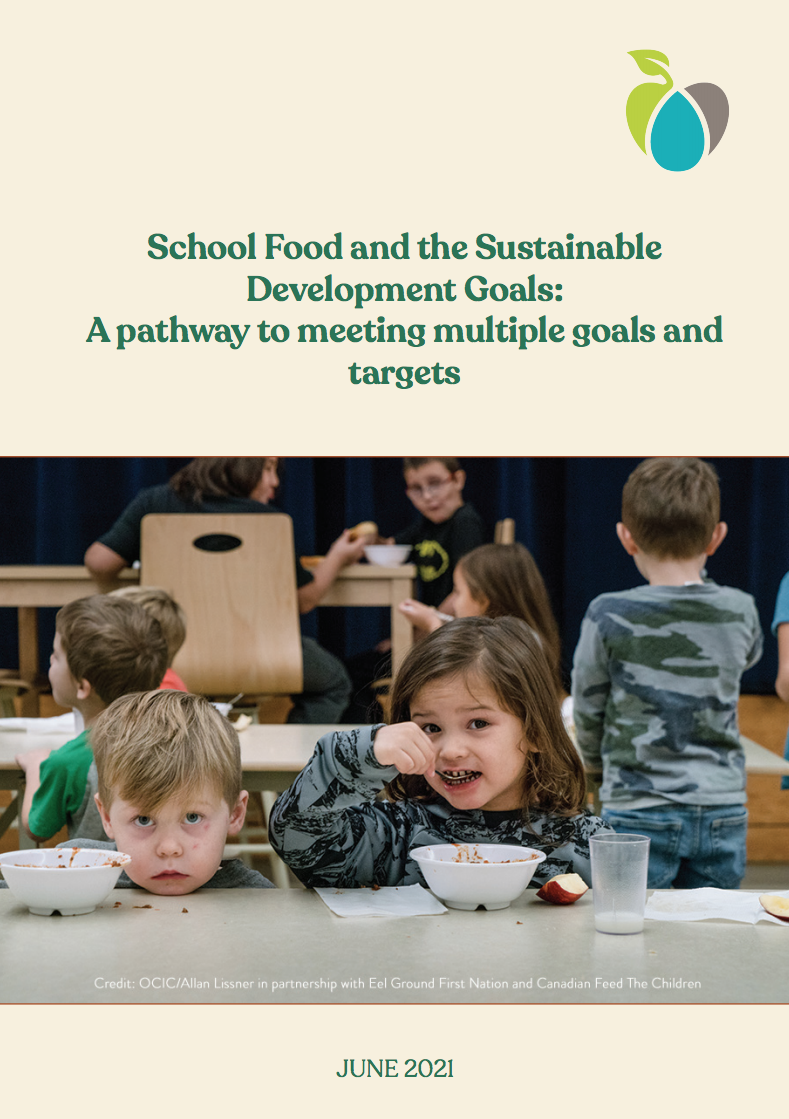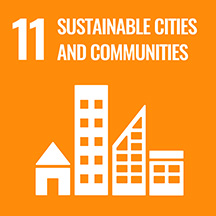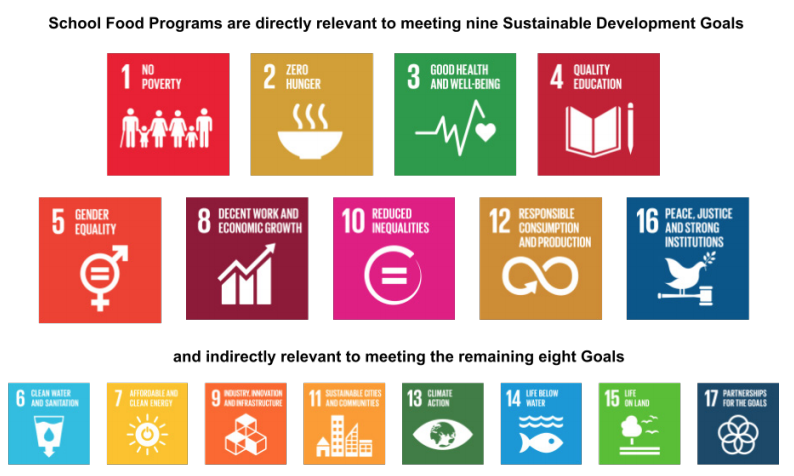Food Secure Canada has released a discussion paper on how school food programs can help advance Canada’s commitment to the United Nations’ Sustainable Development Goals (SDGs).
In doing so, the paper captures how farm to school programs can advance the SDGs and targets.
 The SDGs were launched in 2015 as the “blueprint to achieve a better and more sustainable future for all”; all United Nations Member States, including Canada, have committed to meeting them by 2030.
The SDGs were launched in 2015 as the “blueprint to achieve a better and more sustainable future for all”; all United Nations Member States, including Canada, have committed to meeting them by 2030.
Food Secure Canada’s paper, School Food and the Sustainable Development Goals: A pathway to meeting multiple goals and targets, offers a detailed analysis of how school food can contribute to meeting all 17 SDGs — nine directly and eight indirectly.
While we know farm to school has many benefits and could support many of these goals, we are happy to see the paper specifically highlight the following:
- GOAL 2 – End hunger, achieve food security and improved nutrition and promote sustainable agriculture
- GOAL 10 – Reduce inequality within and among countries
- GOAL 12 – Ensure sustainable consumption and production patterns
 Under Goal 2, the paper explains how farm to school programs support sustainable regional food systems. Thus, farm to school helps support Goal 2’s Target 2.4 – “By 2030, ensure sustainable food production systems and implement resilient agricultural practices that increase productivity and production, that help maintain ecosystems, that strengthen capacity for adaptation to climate change, extreme weather, drought, flooding and other disasters and that progressively improve land and soil quality.” Our partners at Farm to School BC are referenced for how their model supports schools to source local food through farmer relationships, schoolyard farms, and harvesting wild or traditional foods. We see this in our farm to school stories and case studies as well, as shown in our Earth Day blog post from earlier this year.
Under Goal 2, the paper explains how farm to school programs support sustainable regional food systems. Thus, farm to school helps support Goal 2’s Target 2.4 – “By 2030, ensure sustainable food production systems and implement resilient agricultural practices that increase productivity and production, that help maintain ecosystems, that strengthen capacity for adaptation to climate change, extreme weather, drought, flooding and other disasters and that progressively improve land and soil quality.” Our partners at Farm to School BC are referenced for how their model supports schools to source local food through farmer relationships, schoolyard farms, and harvesting wild or traditional foods. We see this in our farm to school stories and case studies as well, as shown in our Earth Day blog post from earlier this year.
 Under Goal 10, the paper links farm to school with Target 10.2 – “By 2030, empower and promote the social, economic and political inclusion of all, irrespective of age, sex, disability, race, ethnicity, origin, religion or economic or other status.” Here it is highlighted that by providing meals and curriculum focused on cultural diversity, as referenced by the U.S. National Farm to School Network, school food programs provide opportunities for students to learn about diverse cultures and practice their own cultures. The Kapapamahchakwew – Wandering Spirit School in Toronto is offered as an example, as it provides programming rooted in Indigenous knowledge and Indigenous Food Sovereignty. We also see this work in some of our inspiring farm to school stories from Indigenous communities and schools.
Under Goal 10, the paper links farm to school with Target 10.2 – “By 2030, empower and promote the social, economic and political inclusion of all, irrespective of age, sex, disability, race, ethnicity, origin, religion or economic or other status.” Here it is highlighted that by providing meals and curriculum focused on cultural diversity, as referenced by the U.S. National Farm to School Network, school food programs provide opportunities for students to learn about diverse cultures and practice their own cultures. The Kapapamahchakwew – Wandering Spirit School in Toronto is offered as an example, as it provides programming rooted in Indigenous knowledge and Indigenous Food Sovereignty. We also see this work in some of our inspiring farm to school stories from Indigenous communities and schools.
 Under Goal 12, farm to school is connected to Target 12.3 – “By 2030, halve per capita global food waste at the retail and consumer levels and reduce food losses along production and supply chains, including post-harvest losses.” This section outlines how “there is evidence that post-harvest losses and wastage are reduced by school food programs that incorporate a farm-to-school approach (FAO & WFP, 2018).” A study is referenced (Izumi et al., 2010) that shows how plate waste is reduced in farm to school programs due to higher quality and an increase in student liking of local produce. We too see this excitement for fresh, local food from our farm to school grantees.
Under Goal 12, farm to school is connected to Target 12.3 – “By 2030, halve per capita global food waste at the retail and consumer levels and reduce food losses along production and supply chains, including post-harvest losses.” This section outlines how “there is evidence that post-harvest losses and wastage are reduced by school food programs that incorporate a farm-to-school approach (FAO & WFP, 2018).” A study is referenced (Izumi et al., 2010) that shows how plate waste is reduced in farm to school programs due to higher quality and an increase in student liking of local produce. We too see this excitement for fresh, local food from our farm to school grantees.
 Our work is then mentioned under Goal 11, with the SDGs that are indirectly impacted by school food: “Goal 11 (Sustainable Cities and Communities) includes targets around green space, building inclusive and sustainable urbanization, and supporting economic, social and environmental links between urban, peri-urban and rural areas. Urban school garden projects contribute to the first two targets, and initiatives like those championed by Farm to Cafeteria Canada create links between schools and local farmers to support the third.” (page 19)
Our work is then mentioned under Goal 11, with the SDGs that are indirectly impacted by school food: “Goal 11 (Sustainable Cities and Communities) includes targets around green space, building inclusive and sustainable urbanization, and supporting economic, social and environmental links between urban, peri-urban and rural areas. Urban school garden projects contribute to the first two targets, and initiatives like those championed by Farm to Cafeteria Canada create links between schools and local farmers to support the third.” (page 19)

Food Secure Canada’s paper makes it clear that connecting students with healthy, local and sustainable food has benefits that extend far beyond school walls. And we are excited about the capacity that farm to school programs have to advance Canada’s SDG commitments!
The paper concludes by recommending that Canada advance its commitment to develop a national school food program in line with the Coalition For Healthy School Food’s guiding principles.
If you haven’t already checked it out, we encourage you to read Food Secure Canada’s School Food and the Sustainable Development Goals: A pathway to meeting multiple goals and targets here.





